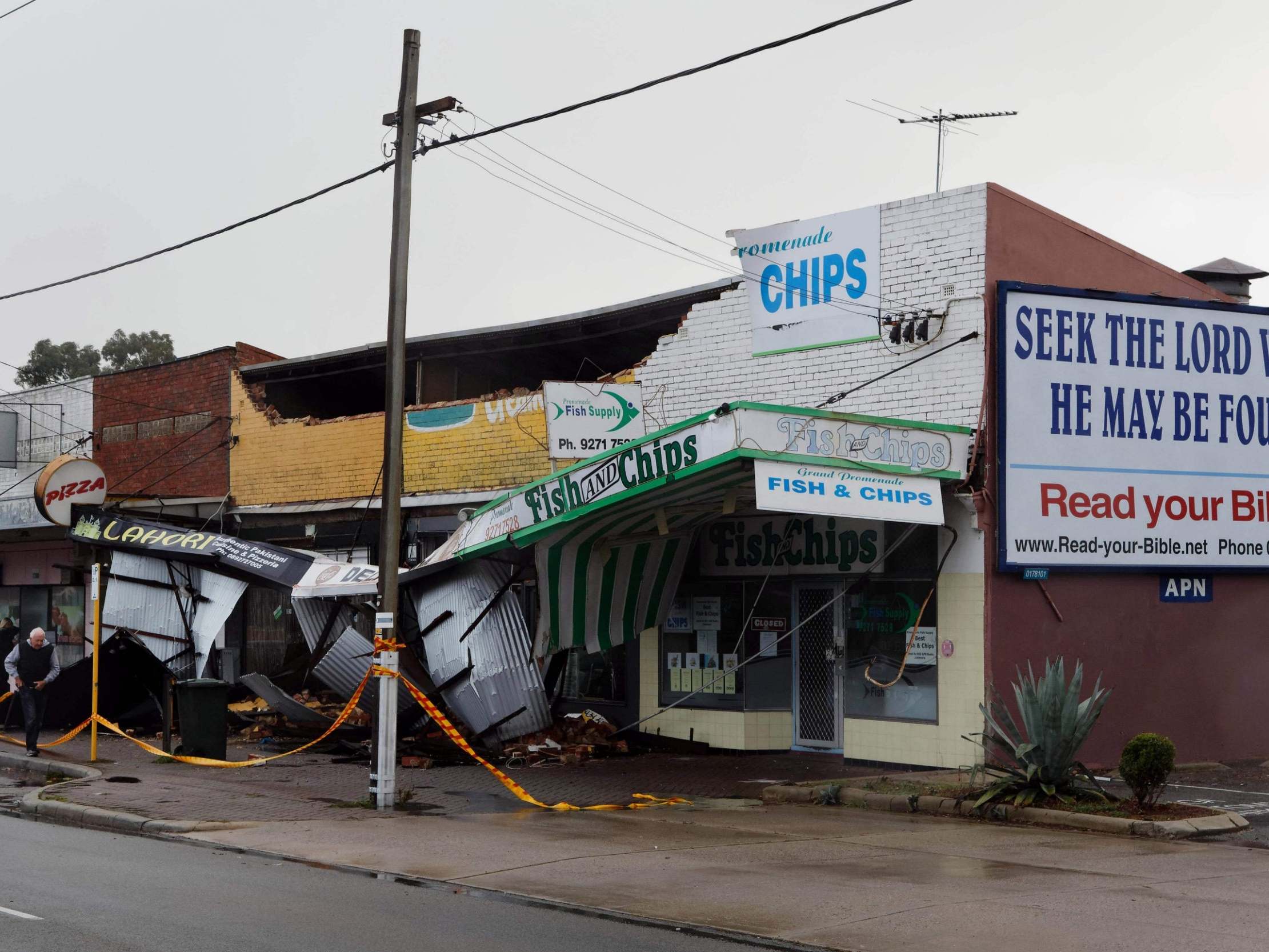‘Once-in-a-decade’ storm hits Australia leaving thousands without power
'Some wild weather has affected large parts of WA, causing widespread damage and large scale power outage,' says prime minister

Your support helps us to tell the story
From reproductive rights to climate change to Big Tech, The Independent is on the ground when the story is developing. Whether it's investigating the financials of Elon Musk's pro-Trump PAC or producing our latest documentary, 'The A Word', which shines a light on the American women fighting for reproductive rights, we know how important it is to parse out the facts from the messaging.
At such a critical moment in US history, we need reporters on the ground. Your donation allows us to keep sending journalists to speak to both sides of the story.
The Independent is trusted by Americans across the entire political spectrum. And unlike many other quality news outlets, we choose not to lock Americans out of our reporting and analysis with paywalls. We believe quality journalism should be available to everyone, paid for by those who can afford it.
Your support makes all the difference.More than 50,000 households were left without power in Western Australia after wild weather hit the region in what has been called a “once-in-a-decade storm”.
Emergency services began cleaning up in Perth on Monday morning after the remnants of Storm Mangga brought down lashings of rain and emergency level storm warnings to the south of the state.
Wind speeds of 132 km/hour (82mph) were recorded at Cape Leeuwin, one of Perth’s most south-westerly points early on Monday, the strongest May gusts in 15 years.
The high-speed winds caused widespread damage, blowing roofs off houses and felling trees and power lines throughout the state. No casualties have been reported.
Utility company Western Power said in its most recent update on Facebook: “Crews are continuing to address hazards across the network and restore power to impacted customers after the powerful storm fronts that crossed over the state yesterday and this morning.
“In the Perth metropolitan area around 5,000 properties remain off supply as our crews continue to address hazards reported by customers.
“Regionally, around 17,000 homes are without power, with Margaret River and Dunsborough the most impacted towns.”
Australian prime minister Scott Morrison said on Twitter: “Some wild weather has affected large parts of WA, causing widespread damage and large scale power outage. Please listen to the advice of emergency services and stay safe everyone.”
The wild storm was a result of the remnants of Cyclone Mangga tracking southeast and colliding in the southern Indian Ocean with a northeast-moving cold front.
The combined weather system impacted a 1,200km (745 mile) stretch of the west coast from Carnarvon to Cape Leeuwin, said Neil Bennett of the Bureau of Meteorology.
“It was really right up and down the coast, including the Perth area, but particularly that southwest area of WA state really caught the brunt of this one,” he said.
The storm began winding down on Monday afternoon and power has been restored to all but 24,000 homes, said Western Australia premier Mark McGowan.
A severe weather warning remains in place for most of the south west districts of the region.
The Bureau of Meteorology’s warning said: “This is a rare event for WA particularly due to the extent of the area affected and the possibility of multiple areas of dangerous weather.
“Widespread damaging winds, averaging 60 to 70km/h with peak gusts to around 100km/h are likely and could cause damage to homes and property in the warning area, including Mandurah, Bunbury, Busselton, Albay and Esperance.
“Damaging surf conditions are likely which could cause significant beach erosion. Damaging surf is expected to continue for coastal parts between Denham and Israelite Bay into Tuesday.”
Additional reporting by agencies
Join our commenting forum
Join thought-provoking conversations, follow other Independent readers and see their replies
Comments